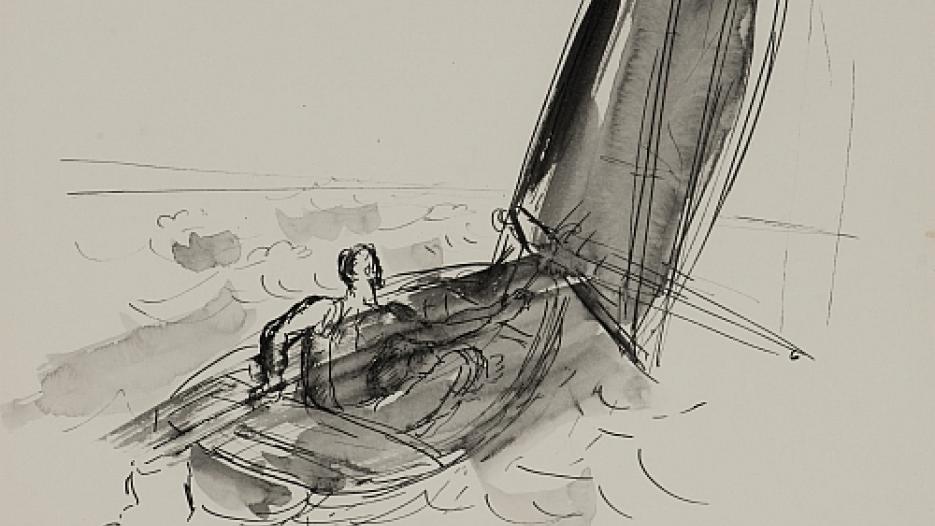
His schooling was not formal, he did not attend academies of art. Wandering around the streets of Nagyszeben (Sibiu), he watched for hours on end the work of stone masons and goldsmiths. He learned the essential tricks of their trades by watching, almost subconsciously. He later “enrolled” in the oldest, and to this day best, “academy” known to art history, when he spent a long time in Italy, and then travelled on foot along the coastal region of the Mediterranean Sea, from Marseilles to Venice. In the great museums of Europe, the galleries and churches of Florence, he honed his knowledge on the ancient sculpture of Egypt and Greece, the work of later masters like Masaccio, Leonardo, Michelangelo, Dürer, Rembrandt and Rodin. At the same time, he also became familiar with the major trends of contemporary painting and sculpture. In addition to Picasso, Brancusi and Henry Moore, his interest was stimulated mostly by the work of László Mednyánszky, Lajos Gulácsy, József Egry, Gyula Derkovits, Jenő Barcsay, Fülöp Beck Ö., Ferenc Medgyessy and Pál Pátzay.
Beside visual artists, he soon became acquainted or friends with some of the nation’s best writers, poets, composers and other intellectuals, whose writings, music and ideas became integral parts of his own artistic world. He was not only fond of music, but played the violin himself. It is not difficult to see his sculptural work as a well-balanced, harmonic musical piece, a composition perfect in form and thought, in which every note and bar has its own character, but is also at the service of the score as a whole.
These intellectual roots, these sources were to nourish his sculptures, drawings and copper repoussés, in which he always concentrated on the whole, never the small details—something that is true almost all of his works. The pure formal idiom and closed structure of his statues evoke the sculpture of such great old arts as that of Egypt, ancient Greece, and Renaissance Italy, while definite contours also link these works to the similar endeavours of his contemporaries, such as Brancusi, Hans Arp, Henry Moore, Fülöp Beck Ö. and Ferenc Medgyessy.
His main themes originated in his investigations of man, nature, and the indivisible unity of the two. His female figures are symbols of different manifestations of joy and pain, as well as of sensuality, while his male portraits, which concentrate almost exclusively on the head, foreground determination and character in the representation. By modelling animals that live with or near man, such as horses, birds, and what were still a common sight on the Tihany peninsula, buffaloes, he found a way to representing nature with symbols. In his biomorphic statues, the creative force now takes the form of a seed or germ, now that of a bud, shell or egg. Eventually, through the abstraction of natural forms, he arrived at the sculptural representation of subjects that had eluded direct portrayal, while being foremost among his ideas, such as birth, motherhood, the origin of light, or love.